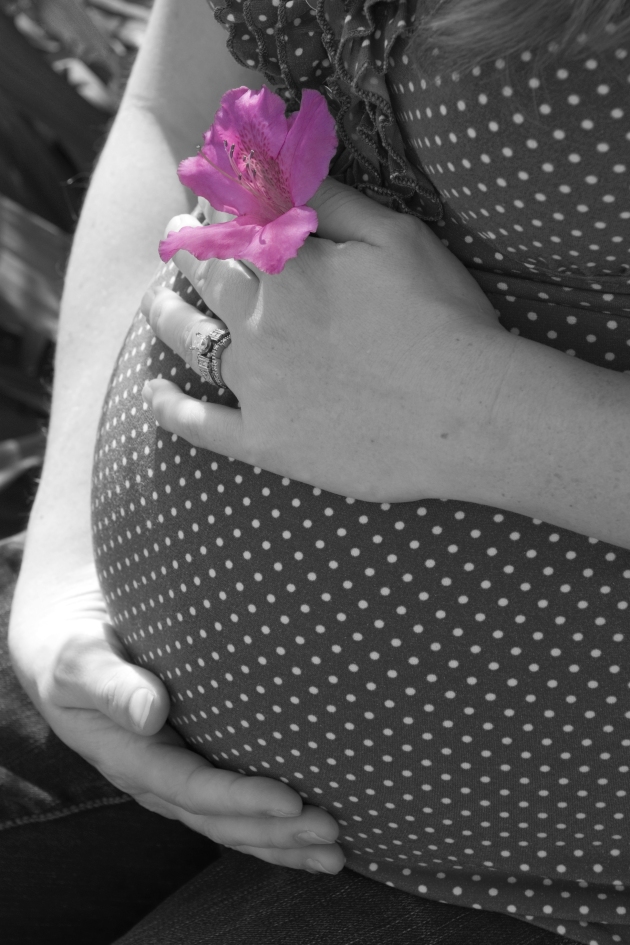Marketing Communications Plan for a Photography Studio
January 25, 2012 1 Comment
Introduction
All types of companies require some sort of selling practice that will promote the company’s product or service and announce them to the potential group of customers. The Photography Studio business, which provides both products and services, is no exception. However, careful considerations must be made in order to successfully sell the product and all services provided to the right kind of customer.
What is Marketing?
Marketing is a business process in which a company, whether it is a for-profit company or a non-for-profit organization, handles its interactions with its customers and crafts those interactions into lucrative ones, both for the organization itself and for its customers. In this process the companies build worth for their customers, and develop sturdy interactions with them that create profits for the company in the end. Marketing involves attracting new customers, developing those sturdy interactions with the customers, keeping them, and growing them. Marketing is not limited only to actual products sold; it is also applied to services.
The Photography Studio
The Photography Studio is a business that provides both a product and services, thus making it a bit more complicated than most businesses out there. The Photography Studio will be a brand new locally owned and operated business that provides local customers with products such as photography prints and photography equipment. The Photography Studio will also provide customers with photographic services such as studio photography, on location photography, photography editing and so forth.
Photo Studios and the Marketing Environment Forces
In every business and every type of company there are different outside elements that affect that company’s marketing department’s power to attract prospect clients, keep them, grow them and maintain a good relationship with them. All these elements and forces make what is called the marketing environment. In order to successfully maintain those customers and relationships, marketers must identify the elements that most affect their type of business and adapt their activities in order to prevail over such outside elements and challenges. The photography studio business is no exception to this rule, and they too have a marketing environment forces that affect their companies.
Competitors. Type the words “photo studio” into any search engine on the web and you will find more than 70,000,000 results, and probably more than 5 in your immediate local area. Almost all companies have to deal with competitors. You may think that companies only compete with lower prices, but this is not true. Companies must provide customers with a valuable product or service that gives customer a higher satisfaction than the competition. Nowadays more and more photographers are opening their own private small businesses, so larger companies must also compete for talent. Photo studios not only compete against each other, but also against increasing high quality of photo software that places professional editing capabilities at customers’ fingertips, sometimes even for free, and who can beat that price? Nowadays, the creation of new digital cameras with more automatic options and easier to use than ever, anyone can become a self-proclaimed professional photographer by just reading a manual, making for dozens of photographers who compete for wedding and senior photography customers everyday. Which brings us to our next challenge and marketing environment factor: technology.
Technological Environment. As new technology develops each year, products become obsolete, but also new products give way to new opportunities, new products and services, and opens up new markets. A long time ago starting a photography business would cost you $20,000 for only the initial equipment you needed, now anyone who can afford a $600 camera can have a shot at the photography business. Moreover, new developments in technology, such as new software capabilities and digital imaging enables customers to edit their own photos, scan them, copy them and reproduce them using at-home software and hardware such as printers. Printers nowadays can be connected to your point-and-shoot cameras and print all your photos at the touch of a button. These new technologies act also as competitors for photo studios, because the more customers can do themselves at home, the less they need the photo studio’s services. Not to mention that with the widespread use of the Internet images are easily copied and more and more people are involved in copyright infringement.
Economic Environment. You might think that economic trends affect all types of businesses, but some may be more affected than others. If the economy is good in general, then the customers will have a stronger buying power and higher spending patterns, and the opposite will be true for a bad economy. For example, if businesses are doing well they will probably have enough money to spend in advertising, which includes photography services. However, during a bad economy, the costs of advertising are usually the first to be cut back.
Target Market and Positioning of the Photo Studio
Once the Photography Studio has identified the segments it whishes to serve, it can analyze each of those segments’ appeal and select one or more market segments to serve. The Photography Studio business will have a market segmentation based on the geographical location to where the business will operate. It will also have a market segmentation based on social class, serving those customers who belong to the middle class, all the way to the upper uppers class. It will also have a market segmentation based on family life cycle, including young seniors at local high schools, singles who are engaged and about to be married, and married couples with children on the way or who already have children. Also, considering these are all special occasions, we can establish a target for behavioral variables such as special occasions like graduations, engagements, weddings, maternity, birth, holidays, and so forth.
The company will be located in a part of town where higher income families live and work, therefore targeting a specific geographical location as well as social class, which can be considered micromarketing and local marketing. The company will use a differentiated or segmented marketing in which it will create different offers for each of the family life cycles it will target. This will be the most profitable option for the company, because it will target clients located in a good neighborhood or area, clients who can afford professional photography services and clients who need photographic services to capture the special moments in their family life cycle, or special occasions.
There are plenty of photography studios out there, how can the Photography Studio business differentiate itself from other competitors? The Studio would remain competitive in regards to pricing, but would offer additional or better services. The studio would offer additional services like in-house hair, makeup and wardrobe consultations for portrait shots; the ability to immediately select and view all the shots taken and decide which ones to print and purchase; on location photography, in different locations other than the studio; the ability to view and share your portraits and experience through the company’s website; the ability to schedule, view, edit, print, share and store all your photographs on your mobile device with a unique application provided by the company; and finally extra photographic services for all photographic needs such as photo shoots, editing, special effects, restoring, printing photos, greeting cards, canvas, framing, enlargements, photo books, calendars, mugs, mouse pads, photo DVDs and videos, passport photos, and much more.
The Photography Studio positioning strategy would be a “More for More” strategy. The Studio would offer much, much more services than any other competitor out there, but it would have to charge more also for all the extra services. The Studio would offer the best quality products and the largest range of products for extra, but the prices would not exceed the customer’s capability to afford them.
The Photography Studio’s position statement would be as follows: For your busy family planning for the most important events of your lives and when you need to capture these special moments to keep and share forever, our Photo Studio is a one-stop photography solution spot for all your photographic needs where you can look your best, pick the best shots, be captured everywhere and anywhere, share the shots with anyone and take them with you wherever you go.
Photography Studios: Shopping Product with Great Product Features
The photography studio business falls under the Shopping Products category. People usually purchase photographic services less frequently than other products, like convenience products. When people purchase photographic services, they will usually compare prices, quality, speed, and style. People who consider purchasing photographic services will usually investigate and compare all the characteristics of each business to select the best one for them.
The marketing considerations that need to be made for the Photography Studio, based on its classification under Shopping Products are very simple. If prospect clients are out there comparing and contrasting all the Photo Studios in the area to select the best one, then the Photo Studio must provide deals and offers that appeal to those customers comparing each business. Marketers of photography services have to provide strong offers and deals in selected outlets, not just everywhere, but where it matters.
The most important decisions to be made in developing a Photography Studio Business compared to other competitors will be in the areas of Product and Service Attributes. More specifically, the Photography Studio would concentrate in providing exceptional Product Features. The best way to compete with other businesses is to be the first of those businesses to offer a new feature. The Photography Studio in question will offer plenty of new, improved and added features to all photographic services that it will make them the first choice for prospect clients.
The Photo Studio and the Pricing Dilemma
There are three main areas that will affect the pricing strategy of the Photo Studio’s products and services. These main areas are the customer’s perception of the value, the product cost and other internal and external considerations. The customer’s perception of the value of the products and services that the Photo Studio offers is what will determine the highest prices that the Photo Studio could charge for such products and services. This means that whatever amount the customers perceives as too much for the product or service that they are receiving then that is the amount art the very top that the Photo Studio should charge below of, otherwise, the customers will not purchase the service. The product cost is all the combined expenses that the Photo Studio needs to spend in order to provide a product or service. The Photo Studio should not charge below this amount. For example, if the photo studio hires a photographer to take pictures at a high school graduation, and then all the images are printed and provided to the class on a CD, then the Photo Studio must calculate the amount they are spending on the photographer’s services, the printing cost and the cost of the CD, and they should charge the high-school more than this amount.
But these are not the only areas that the Photo Studio should consider when setting prices. The Studio should also consider external factors like competitor’s prices for example. Because clients may chose the competition over the Photo Studio, if their prices are set too high, and the competition is offering the same service and quality. The Photo Studio should also consider their previously decided target market and positioning. Since the target market for this Photo Studio was higher income families, then the prices could be higher than the competitor’s. Since the positioning for this Photo Studio was a “More for More” strategy, then the prices would definitely be higher than the competition.
This particular Photo Studio is targeted to higher income families; therefore it makes sense to use a pricing method that would be on the higher end of the pricing curves. This Photo Studio will use the value-base pricing method to set prices for the products and services that they offer. Price setting will begin by understanding the prospect customers’ needs and value perceptions, what are they paying and what are they receiving from competitors. A price then is set that matches the customer’s perceived value. Then costs that can be incurred must be determined and finally the products that will deliver the value at the target price must be designed.
More specifically the Photo Studio in question will use the value-added pricing method. Since the positioning is one of “More-for-More”, then the Photo Studio will create value-added features to the products and services it offers to differentiate it from the competitors and sustain the higher prices.
Distribution Channels
In a Photo Studio that offers a one-stop for all photographic needs, then the customer should feel no need for other intermediaries in the process of receiving their products and services from the Photo Studio. Therefore, this company will sell directly to the consumer.
Since the Photo Studio will implement a direct marketing channel, there will only be two members in the channel, the Photo Studio and the final consumer. This could be considered exclusive distribution, because only the Photo Studio, and perhaps any franchise owners and other locations of the store would have the right to distribute the company’s products and services. The Photo Studio will employ their own sales representatives, their own photographers in studio and on location, they will be prepared with all equipment necessary to manage, print and edit all images for the customers. Therefore, there will be no need for any other intermediary or member of the channel.
The channel organization of the direct marketing channel is pretty simple, because it only involves the Photo Studio and the final customer. However, the Photo Studio could engage in several other channel organizations. A good example would be to create a horizontal marketing system with companies that provide yearbook creations to local high schools. In such channel organization, the Photo Studio could join forces with a local printing company who provides such services and be the main photography studio to provide photography services to high schools that need to take pictures to include in their yearbooks.
Another option could be to partake in a multichannel distribution system in which the Photo Studio can create or develop more marketing channels to reach other customer segments. For example, the company could create on marketing channel for all high school potential customers, another marketing channel for all wedding customers, and yet another channel for maternity and birth customers. This will enable the company to further specify the different options, offers and services that they can provide for each customer segment.
The Marketing Communications Mix of the Photo Studio
After analyzing the marketing environment forces that impact the Photo Studio, positioning the company, selecting the target market, identifying the type of product and service that the company is providing, pricing those products and services, and selecting a proper distribution channel, the last step, and probably the most important one would be to select the proper marketing communications mix to persuade customers and inform them about the Photo Studio.
Overview. There are more than plenty promotion tools for the Photo Studio to take advantage of and use to persuade and inform customer about the products and services that it offers. These tools include advertising, sales promotions, personal selling, public relations and direct marketing. The Photo Studio will not engage in mass marketing, but rather develop a focused marketing program to better create a stronger relationship with its customers. But using so many tools to create a more customized marketing strategy can pose some difficulties and the Photo Studio should always keep a clear and consistent message throughout all the tools, in order to have a successful integrated marketing communications mix.
Promotion Mix Strategy. The Photo Studio will focus a large portion of its marketing efforts in advertising, even though it can be very expensive. The Photo Studio will also offer a large amount of sales promotions. However, the Photo Studio will focus less on direct marketing, personal selling and public relations. The Photo Studio will use a pull strategy, because it will focus mainly in advertising and consumer promotions to attract customers.
The Message. The message that will be informed to the Photo Studio’s target market across all the promotional tools chosen will be a clear and consistent message. This Photo Studio is for high-income customers that have busy lives and want to look their best; therefore the studio’s message should reflect this benefit. The message will be a clear and simple statement as follows:
“Busy? Let us take the picture. We’ll make you look good”.
Advertisement. Advertisement was chosen as the main promotional tool for the Photo Studio because it will allow the company to reach all potential customers in the local area by being exposed to them in many several ways. It will also help the Photo Studio to become locally known and the message widely spread. The Photo Studio will use advertising in the forms of local TV ads, to constantly inform the locals about the studio. Listings in local yellow pages would allow for potential customers looking for photographic services to find us. Flyers and brochures in local schools would serve for seniors to consider the company for their senior studio shots. Local events magazines that advertise wedding locations will also advertise the Photo Studio as the place to go for your wedding photography needs.
Sales Promotion. Sales promotions will be offers to potential customers so that they are enticed to book a photo shoot and buy prints from the Photo Studio as soon as possible in order to take advantage of the deals being offered. This promotional tool will be used because it will entice and attract customers. Deals such as referring a friend could be offered to seniors at the local high school so more customers from the same high school would choose our Photo Studio over the others because they can receive a discount by referring their friends. Discounts can also be offered to couples that are engaged and taking their engagement pictures and sign a contract to also book the Photo Studio for their wedding pictures. Discounts can also be offered to customers who print their photos at the Photo Studio and offering discounts with more quantities of prints provided.
Direct Marketing. The Photo Studio chose direct marketing, because once it has a database of all past and prospect customers, the company will be able to send customized and immediate messages to those clients. For example, the Photo Studio can choose only a portion of the database, those interested or who previously purchased engagement photo shots, and offer 10% discount on wedding photography. This will be conveniently done by the Photo Studio by using a computer based database that would classify customers by their different interest, age group and such, in order to send specific mass e-mails and newsletters to those customers who would most likely be interested in the offers the studio is presenting. The best part is that it would pose no major expenses by the company to create such marketing promotions.
Conclusion
If the Photo Studio is prepared, it creates and follows a good marketing communications plan, then most likely the studio will be successful in attracting, keeping and growing the customers and clients it provides services too. However, the Photo Studio should always pay attention to the changes in the environment forces affecting the marketing strategy in order to adapt it to those changes and continue to have a good marketing communications plan.















